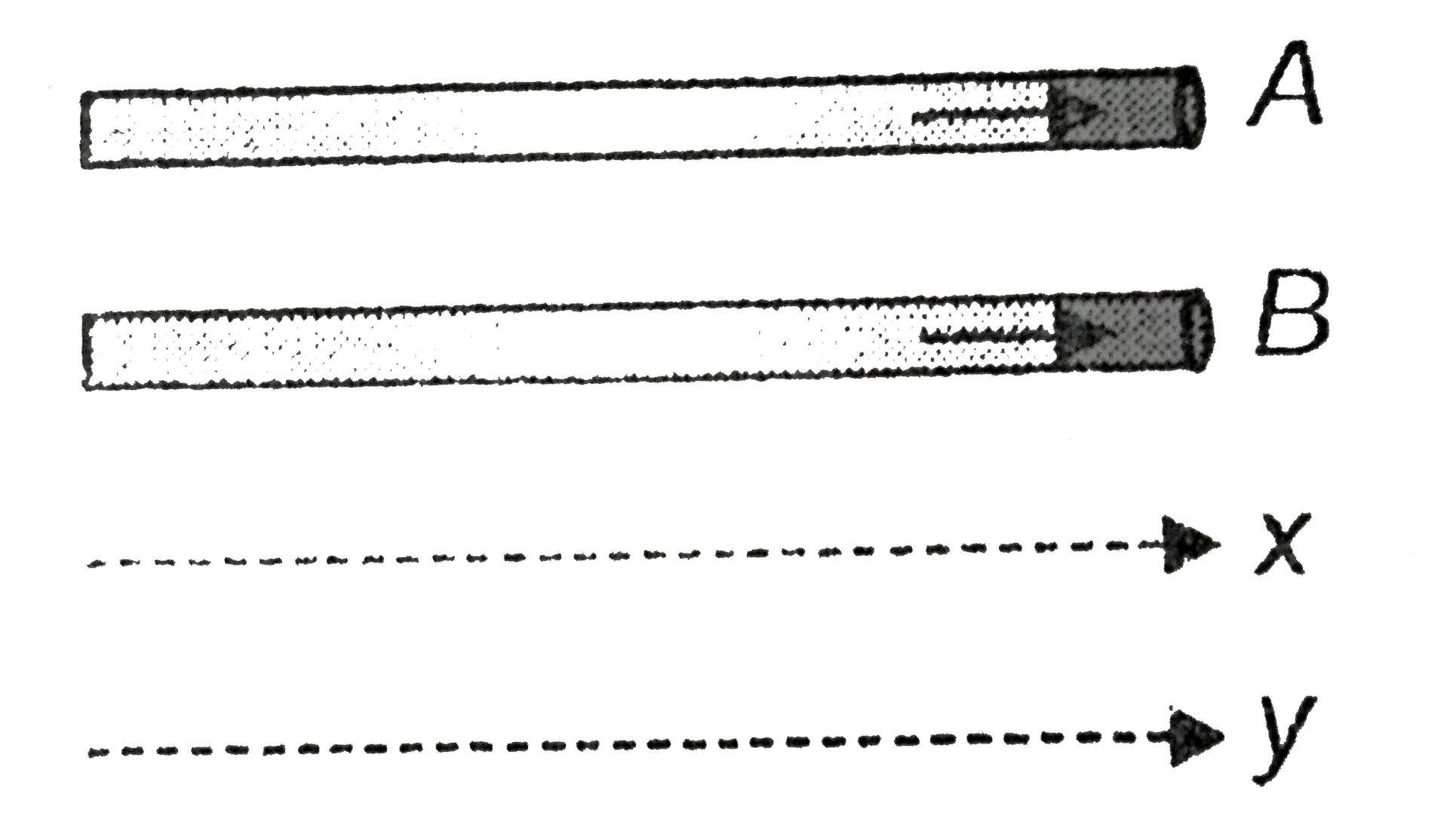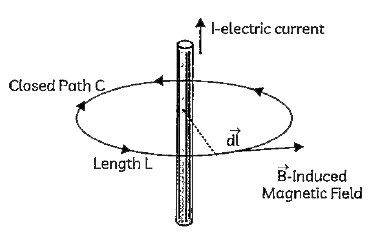A and B are two conductors carrying a current I in the same direction, X and y are two electron beams moving in the same direction. Then there will be

attraction between A and B, repulsion between x and y
repulsion between A and B, attraction between x and y
attraction between 4 and B and r and y
repulsion between A and B and x and y
The correct Answer is:C
Parallel currents in the same direction attract each other. Moving electron beams is equivalent to an electric current min opposite direction.
∴There will be attraction between conductors A and B and also between x and y.
Topper's Solved these Questions
- MAGNETIC EFFECTS OF CURRENT AND MAGNETISMBOOK - MTG GUIDECHAPTER - MAGNETIC EFFECTS OF CURRENT AND MAGNETISMEXERCISE - NEET CAFE (TOPICWISE PRACTICE QUESTIONS)(TORQUE ON A CURRENT LOOP IN A MAGNETIC FIELD)
5 Videos
- MAGNETIC EFFECTS OF CURRENT AND MAGNETISMBOOK - MTG GUIDECHAPTER - MAGNETIC EFFECTS OF CURRENT AND MAGNETISMEXERCISE - NEET CAFE (TOPICWISE PRACTICE QUESTIONS)(MOVING COIL GALVANOMETER)
24 Videos
- MAGNETIC EFFECTS OF CURRENT AND MAGNETISMBOOK - MTG GUIDECHAPTER - MAGNETIC EFFECTS OF CURRENT AND MAGNETISMEXERCISE - NEET CAFE (TOPICWISE PRACTICE QUESTIONS)(FORCE ON A CURRENT CARRYING CONDUCTOR IN A UNIFORM MAGNETIC FIELD)
10 Videos
- ELECTROSTATICSBOOK - MTG GUIDECHAPTER - ELECTROSTATICSEXERCISE - AIPMT/NEET (MCQ.s)
34 Videos
- OPTICSBOOK - MTG GUIDECHAPTER - OPTICSEXERCISE - AIPMT/NEET
55 Videos
Similar Questions
A and B are two conductors carrying a current i in the same direction x and y are two electron beams moving in the same direction. There will be

View SolutionA and B are two conductors carrying a current i in the same direction x and y are two electron beams moving in the same direction. There will be

View Solution
Knowledge Check
A and B are two conductors carrying a → A
current I in the same direction. X and → B
y are two electron beams moving in …..→ X
the same direction …..→ Y
 AThere will be repulsion between A and B attraction between x and yBThere will be attraction between A and B, repulsion between x and yCThere will be repulsion between A and B and also x and yDThere will be attraction between A and B and also x and y
AThere will be repulsion between A and B attraction between x and yBThere will be attraction between A and B, repulsion between x and yCThere will be repulsion between A and B and also x and yDThere will be attraction between A and B and also x and y
If two conductors carry current in opposite direction, then:Athere is no force between themBforce is repulsiveCforce is attractiveDindependent of forceTwo parallel conductors carrying current in the same direction attract each other, while two parallel beams of electrons moving in the same direction repel each other. Which of the following statement provide part of all of the reason for this ? (Choose the incorrect option)
AThe conductors are electrically neturalBThe conductors produce magnetic fields on each otherCThe electrons beams do not produce magnetic field on each otherDThe magnetic forces caused by the electron beams on each other are weaker than the electrostatic forces between them
A and B are two conductors carrying a currwnt i in same direction x and y are two electron beams moving in the same direction .there will be

View SolutionTwo parallel beams of positrons moving in the same direction will
View SolutionTwo parallel beams of positrons moving in the same direction will
View SolutionTwo parallel beams of positrons moving in the same direction will
View SolutionIn previous question, if both conductors carry equal currents in the same direction
View Solution
